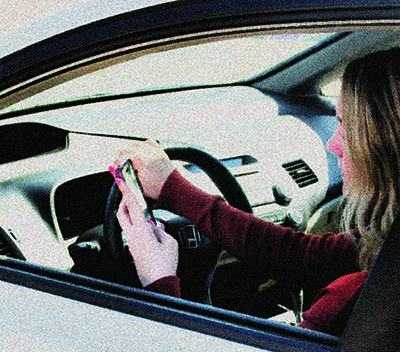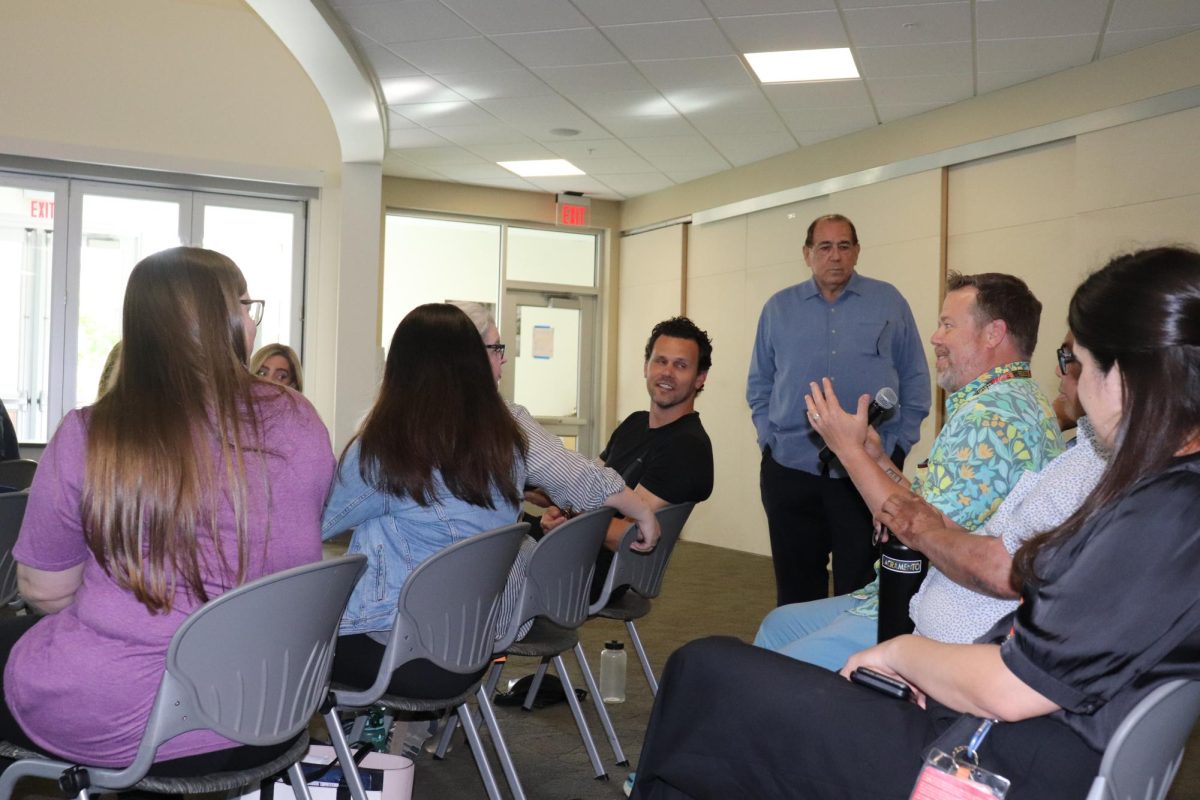Distracted driving puts others’ lives at risk

Young adults are most likely to be distracted by a cell phone while driving.
March 28, 2014
There is a killer on the loose. One that can change the lives of people in the blink of an eye, or in this case, the push of a send button.
Distracted driving is a fast-growing epidemic that motorists face on America’s roadways. While using a phone is the most common form, distracted driving is anything that diverts a driver’s attention from the road, even something as simple as changing the radio station.
While snapping selfies behind the wheel might be an amusement for some, it has proven dangerous to not only themselves, but to others around them. So dangerous in fact, that it has been compared to driving under the influence.
At any given daylight moment across America, approximately 660,000 drivers are using cell phones or manipulating electronic devices while driving, a number that has held steady since 2010, according to the National Occupant Protection Use Survey conducted by the National Center for Statistics and Analysis of the National Highway Traffic Safety Administration.
After being run off the road more than once by someone who was texting and driving, and having friends who have been in accidents where someone was using their phone, my phone remains out of my reach while driving. It isn’t worth what I could potentially lose.
The facts of texting and driving should be enough to make someone think twice about tweeting to his friends or updating a Facebook status while on the road. According to Distraction, the Official U.S. Government Website for Distracted Driving, if someone is driving 55 mph and looks at his phone for five seconds, he will have traveled the length of the football field without having looked at the road.
What is worse is that many young adults, 77 percent in fact, are confident that they can safely text and drive, but texting while driving makes a crash 23 times more likely, according to NHTSA. For drivers 15-19 years old involved in fatal crashes, 21 percent of the distracted drivers were distracted by the use of cellphones, according to NHTSA.
Even though teens and young adults are the largest group of distracted drivers, they aren’t the only ones to blame for endangering the lives of others. According to a survey done by the Centers for Disease Control and Prevention, 31 percent of U.S. drivers ages 18-64 reported that they had read or sent text messages or email messages while driving, increasing the age bracket significantly.
The consequences of texting and driving should be heavily considered before reaching for the phone.
Tickets can be issued just for texting and driving. According to the website Findlaw which tracks various state laws, in California the fines stemming from a texting-while-driving ticket can reach up to $300 for a first offense. That’s an awful lot of money to fork over for an “LOL :-).” With tickets can come driver’s license points and insurance penalties that raise insurance premiums.
What’s worse than ticket fines and increased insurance payments? According to Findlaw, a website that gives legal information, many states dole out hefty punishments, including jail time for behind-the-wheel texting that leads to serious injury or death and a number of cases exist in which texting drivers wound up with vehicular manslaughter or homicide charges.
So is it really worth risking everything to send a text while driving? While some may try to justify their actions, there is no way to justify risking their lives and the lives of those on the road around them.
That text can wait. So put the phone down, focus on the road and enjoy the ride.





